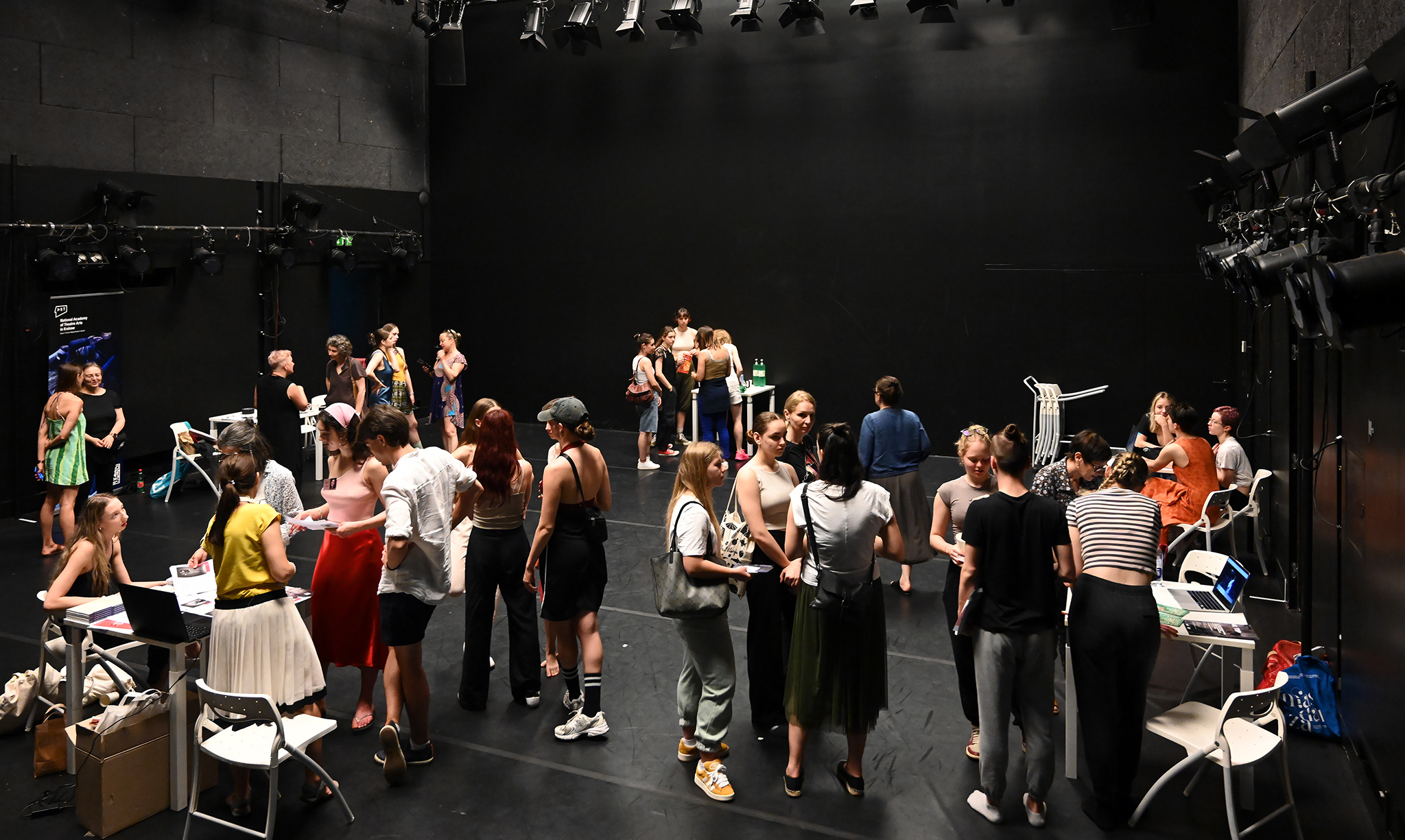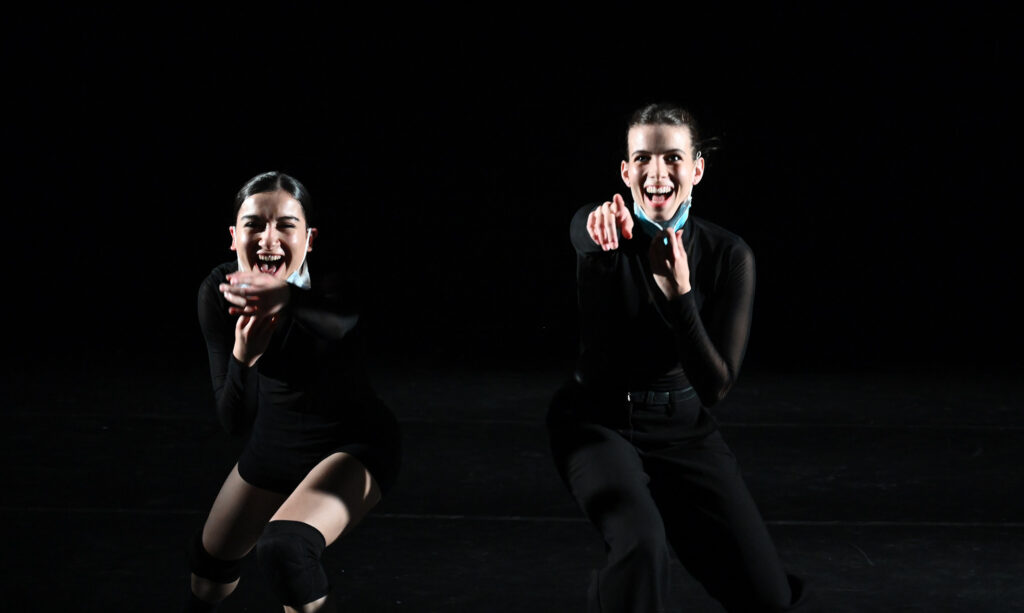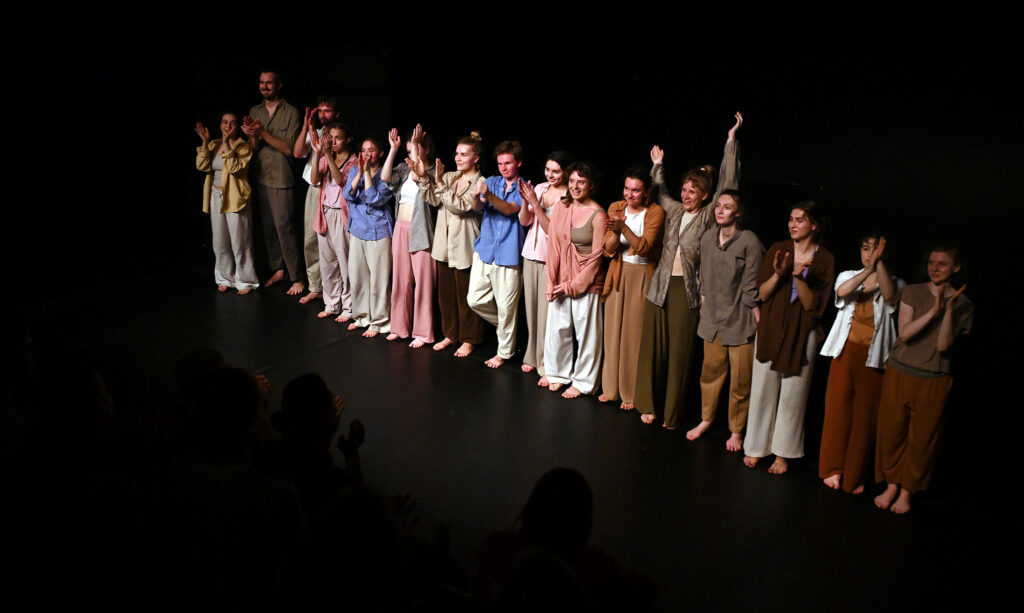
The Hungarian Dance University has joined a cooperation project between Central European dance universities, organised by the Croatian Institute for Movement and Dance. The project is entitled Beyond Front@: Bridging Periphery and aims to create a network of students and universities in Central Europe that will connect the dance scenes of the region. The initiative will provide opportunities for knowledge sharing, student mobility and artistic and research collaboration between institutions.
Three universities are represented in the project: the Dance Department of the Zagreb Academy of Theatre Arts, the Hungarian Dance University and the Dance Department of the AST Academy of Theatre Arts in Krakow. Virág Sóthy, Education Activities Artistic Manager at CEDT, represented the Hungarian partner of the Creative Europe project, which is the backbone of the project.
The first meeting took place in Zagreb, where the Hungarian Dance University was represented by the second-year students of the Institute of Choreography and Dance Teacher Training, Janka Kőműves, Zsófia Matesz and Panna Pozsony, and the students of the Institute of Art Training, Dorka Imely, Míra Éles, Hanna Dorsich and Ruszlán Babácsi. The training and research profile of our university was presented by Dr Gabriella Kézér and Dr Anita Lanszki.

Photos by Croatian Institute for Movement and Dance
The Zagreb event was the first meeting of a three-year programme linked to the 41st Zagreb Dance Festival. The three-day event was hosted by the Zagreb Dance Centre. The programme kicked off on 7 June with a Central European improvisation co-production featuring our former student Dorina Kiss, a graduate in dance and rehearsal management.
Dance Communication Lab was presented by Croatian, Polish, Slovenian, Romanian and Hungarian dance artists, choreographed by Matjaz Faric. This was followed by a performance by Matea Bilosnic as part of the Dance Week Festival. The day ended with a student mix-up at Café bar VESPA, where students from the three universities met each other in an informal atmosphere. The next day, students gave their performances, followed by a joint celebration. The Croatian students improvised in a Japanese garden in Zagreb, while the Polish and Hungarian students gave their performance in the Black Studio of the Zagreb Dance Centre. On the third day, the universities presented their training profiles, projects and research areas.

The first meeting of the three dance universities proved to be a success. Students from the region showed great interest in the Hungarian Dance University’s training and research projects, and the presentation given by Hungarian students was a great success among Croatian and Polish students. At the end of the event, the students concluded the programme with a spontaneous improvisation, which could be the basis for future joint creations.


